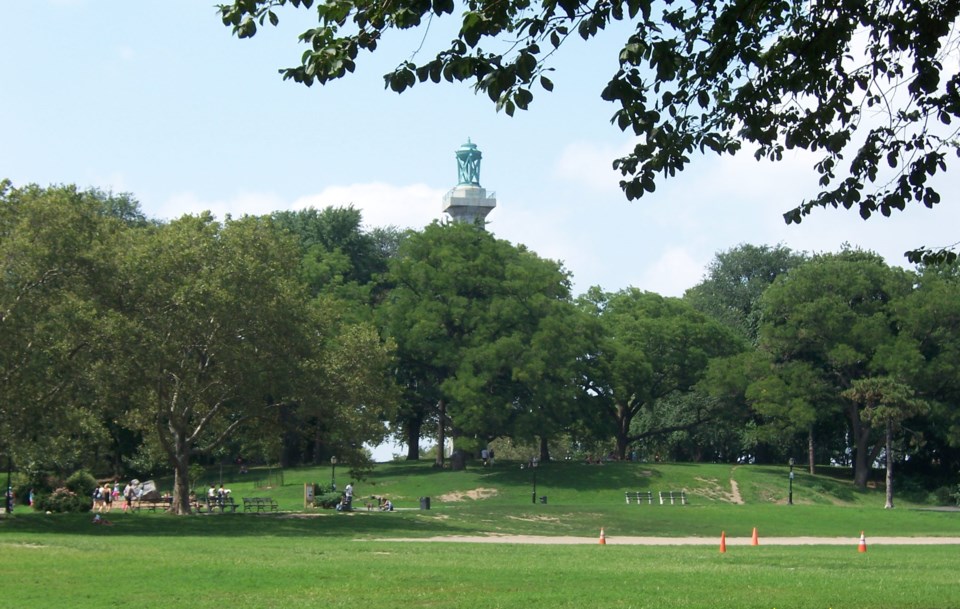
Teeming with architectural holdovers from the post-Civil War era, Fort Greene has remained a largely low-rise, tranquil neighborhood with an unwavering self-awareness of its own history.
Take St. Felix Street, whose landmark status prevents homeowners from altering the facades of their brownstones, including the wrought-iron balustrades on the front stoops. When a sinkhole materialized in the 1980s due to subway construction, the city proffered subsidies for residents to renovate their damaged stoops — on the condition they were built the old way.
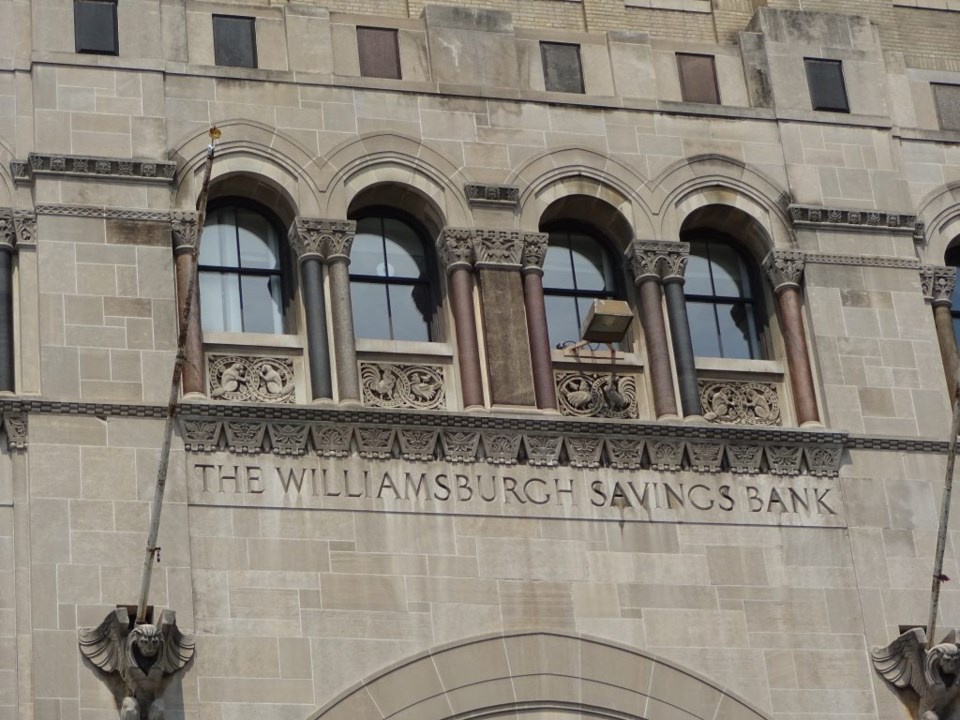
Today, such codes are slightly less unflinching. Now a collection of luxury apartments, formerly the Williamsburgh Savings Bank (which still bears the old Dutch spelling), was Brooklyn's tallest skyscraper at 37 stories until 2009.
"When we first moved out here four or five years ago, this was the only skyscraper," said Big Onion Walking Tour Guide Kelly Hacker Jones, a PhD candidate in History at Stony Brook University. "You could go into Governor's Island and see this structure out from the bay."
The bank has since been dwarfed by Avalon Willoughby Place, a mixed-use residence and flagship of gentrification in downtown Brooklyn after a 2004 rezoning of the district sparked the development of thousands of residential units.
Another must-see along the tour was Clinton Avenue's self-styled "Millionaire's Row," a boulevard lined with gated mansions built by the offspring of oil magnate Charles Pratt, who, in the 1860s established the Astral Oil company in Greenpoint. A brick and brownstone villa with classic detailing, Pratt's former home at 232 Clinton Avenue and gift of lavish homes for his sons along the same street quickly established it as Brooklyn's most fashionable avenue — or "Brooklyn's answer to Manhattan's Fifth Avenue," as Jones dubbed it.
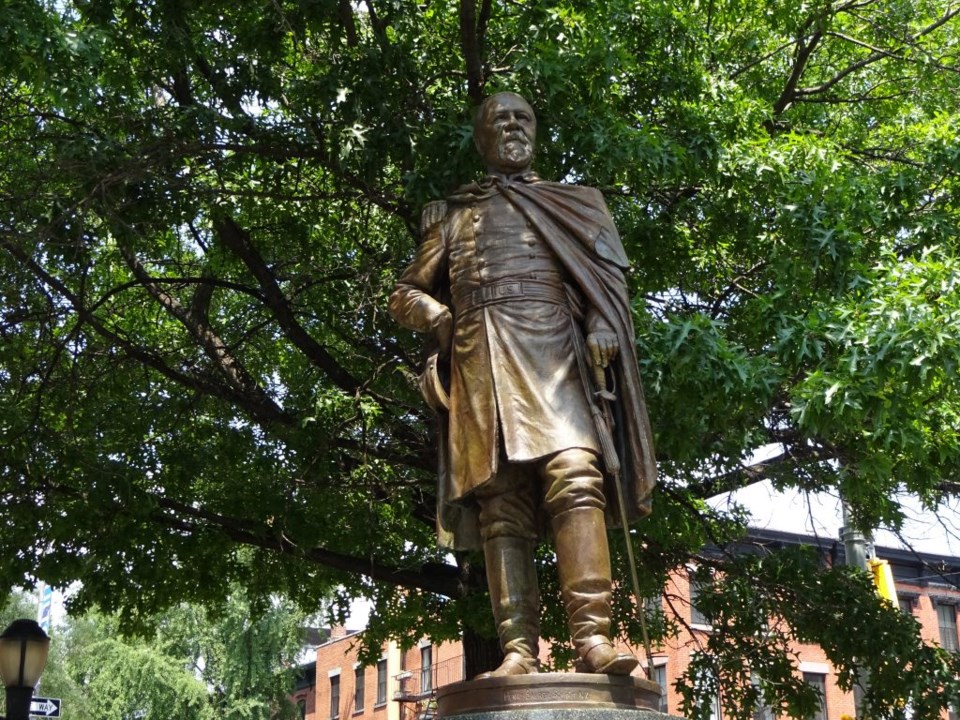
Despite the encroachment of glass-fronted condominiums with enviable roof decks, memorialization in Fort Greene remains stark, as Brooklyn residents learned during a recent tour of the area led by Big Onion Walking Tours. Celebrating its 25th anniversary this year, the Park Slope-headquartered company hosts tours across New York City led by educators and graduate students.
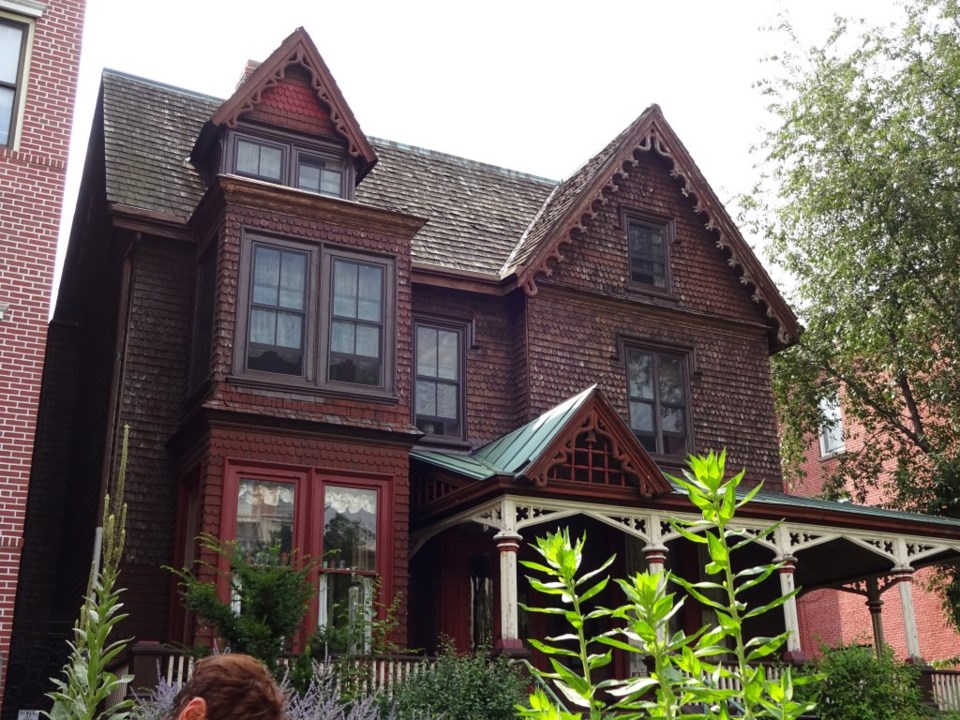
The Roman Catholic Bishop of Brooklyn now occupies the Romanesque-style home built by Pratt's eldest son, whose beautiful, arched porte-cochère harkens to Clinton Avenue's "Gold Coast" days when newly rich industrialists began settling there. The street also contains the largest concentration of intact row houses constructed after the Civil War, whose stateliness prevails.
Fort Greene's most ostentatious nod to history is its eponymous 30-acre park, whose terraced landscaping venerates a 128-foot tall monument dedicated to Americans imprisoned in inhuman conditions during the Revolutionary War. The British kept the prisoners in ships anchored along Wallabout Bay, removing the masts so that the vessels would remain stationary and limiting captives' access to food and water. On that crisp afternoon, ambitious joggers could be seen taking on the steep incline leading up to the monument.
A dividing line between Myrtle Avenue and Fort Greene, the park is today an incidental border between one of New York City's largest housing projects (the Walt Whitman and Ingersoll Houses) and Brooklyn's upper crust. "The park still acts as this very clear line between classes," Jones said.
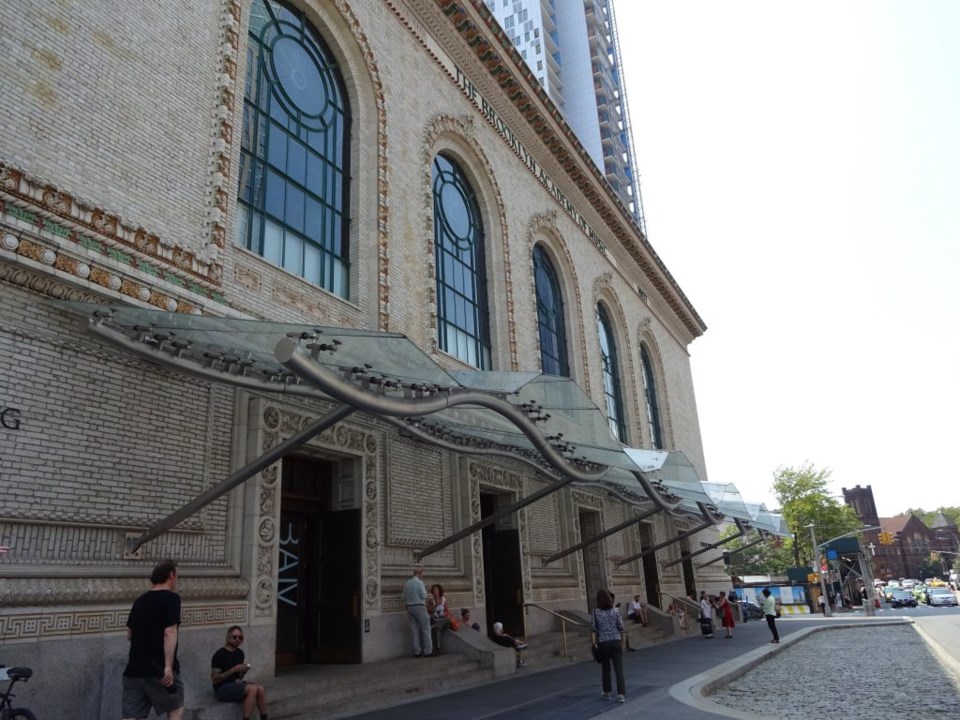
While old and new continue to peaceably rub shoulders, Fort Greene has enjoyed an influx of modern facilities dedicated to arts and culture that undeniable hallmark of rising living standards and, yes, gentrification. In its first year, the Barclays Center was one of the top-selling sports and entertainment arenas in the US.
Meanwhile, the Brooklyn Academy of Music in the neoclassical Peter Jay Sharp Building is a hub for theater, opera, dance, music, as well as the well-known Next Wave Festival.
"They do a lot of outreach, too. They sponsor a street festival where they honor local forms of dance," said Jones.



